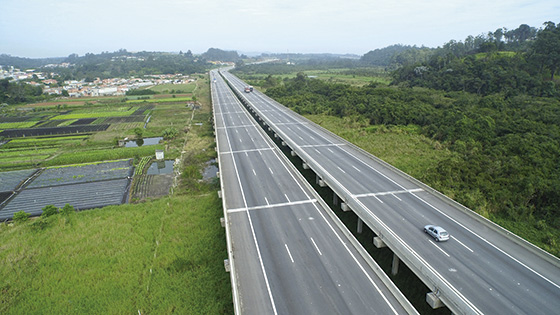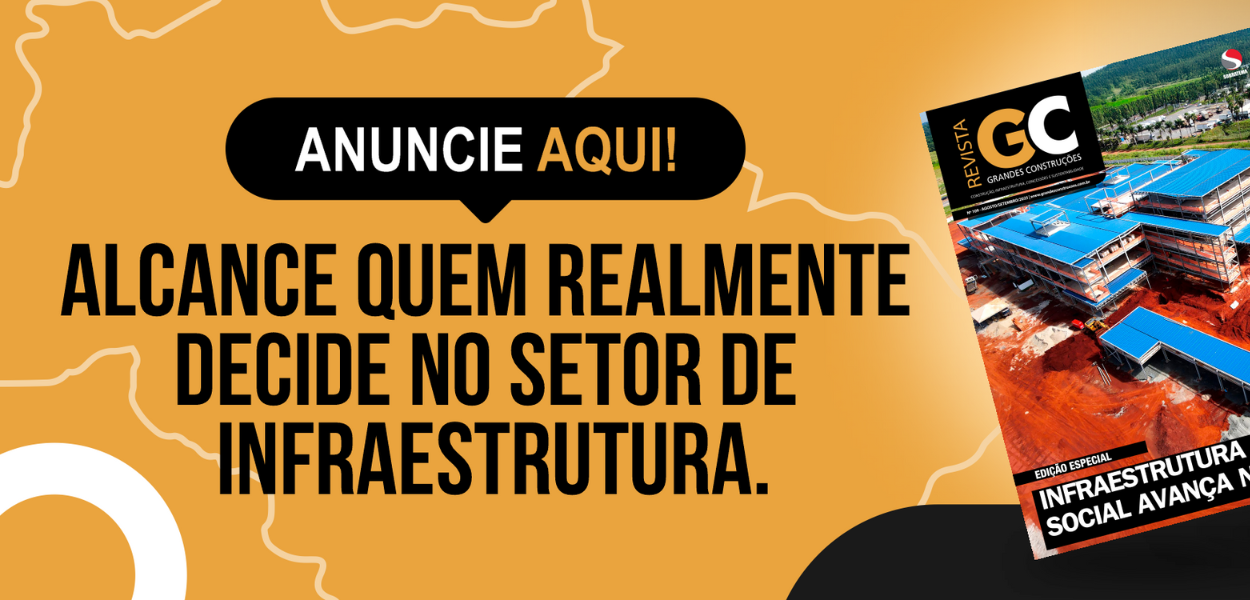Engineering in favor of environment

East section of Rodoanel Mario Covas shows that sustainable construction is already a reality in public works carried out in Brazil
In July 27, the second phase of the Eastern Section of the Rodoanel Mário Covas (5.5 km long) was open to the traffic. With the end of the works, the Eastern Section of the road ring around the Metropolitan Region of São Paulo is completed, since its first phase—38 km long (between Ayrton Senna and Anchieta Highways)—was already opened in July, 2014. But more than the delivery of a road section to the local population, this opening event has an emblematic meaning: the concern with the mitigation of environmental impacts. This approach guided the design managed by the concessionaire SPMAR and made the project able to become a new parameter of sustainability for civil construction in the country.
This concern was present in the engineering studies and in the selection of construction methods and technologies to be adopted. This allowed the Eastern section of the Rodoanel to be built in the region of high Tietê River, preserving the natural richness of the region, floodplain forests of the local rivers. The set of measures carried out prevented, for example, that an area equivalent to 90 soccer fields would be deforested.
“We built most of the road in elevated sections, preventing the contact with the floodplains of Tietê and Guaió Rivers and reducing drastically the environmental impact. In addition, we reused all rock removed from the tunnels to make asphalt and concrete for the road, making unnecessary to use disposal areas. In the social context, we hired more than 12,000 persons and expropriated more than 300 families below the expectations of the edict”, says the Executive Director of the Concessionaire SPMAR, Marcos Abreu Fonseca. “SPMAR won the concession of Southern and Eastern Sections presenting a considerable discount in the toll value and built the road using no penny of the taxpayers”, adds him.
The entire project was built with an investment above R$ 4.5 billion, financed exclusively by private initiative. The return of the initial investment will be carried out through toll collection during the time of concession (30 years). The model of compensation—that is fairer for the taxpayer—establishes that the payment of the road will be carried out only by those who use and take benefit from it.
A low-impact project
During the 18 months of studies carried out before the start of works, engineers, technicians and several professionals were concerned in planning and in using advanced engineering techniques to take better advantage of the local features and mainly to reduce the environmental impact, preserving the floodplains of Tietê and Guaió Rivers and reducing significantly the traffic of vehicles in the neighboring communities during the works.
One of the main differentials of this project was the low impact in the floodplains of Tietê and Guaió Rivers, a region of freshwater springs that compose the Tietê Environmental Protection Area and that shelters important biologic communities to maintain the biodiversity and the quality of water. To privilege the conservation of the area, the engineers built a viaduct with more than 10 km over the floodplains of the rivers, using the construction method known as Light Structured Abutment.
Other sustainable technology developed and used exclusively for the construction of the Eastern Section was the Mobile Shoring. The equipment—unique in Latin America—ensured a very high productivity for this type of work, producing 120 m of deck per week. Two machines were used, producing simultaneously 60 m with three traffic lanes in each direction.

Av. Francisco Matarazzo, 404 Cj. 701/703 Água Branca - CEP 05001-000 São Paulo/SP
Telefone (11) 3662-4159
© Sobratema. A reprodução do conteúdo total ou parcial é autorizada, desde que citada a fonte. Política de privacidade










